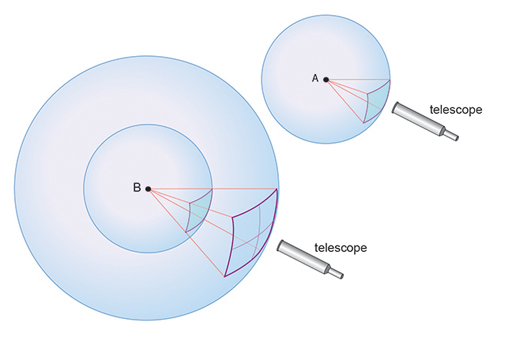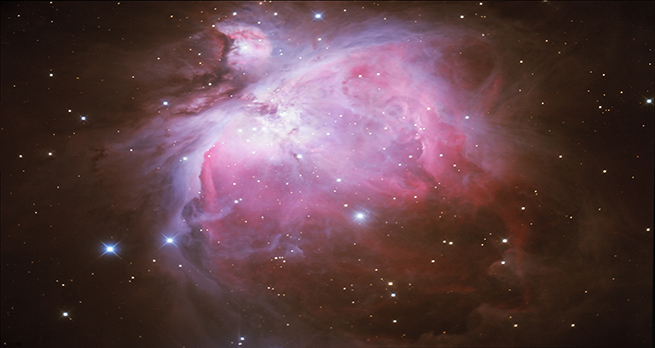2.1.1 Luminosity of a star

Imagine a light some distance away from you (also imagine that it is dark, and all you can see is that light … ).
The light is shining with a particular brightness. Can you tell how far away the light is? Is it a really, really bright light that is quite far away? Or a more dim light, that is much closer? Without some more information, you cannot distinguish between the two possibilities.
Figure 3 shows how this effect is important when it comes to stars. The two stars, labelled A and B, have the same luminosity but, as you can see, the light from the more distant star is more spread out by the time it reaches the observer (indicated as a telescope), and so appears to be less bright.
So when you look at two stars which seem to have the same brightness, you have to consider their distance. Do they actually have the same brightness or is one star much closer than the other?
Why is it important to know whether a star is luminous or not, close to us or far away? It is important because this is directly related to what type of star it is, and to its age. You’ll explore this idea later on, when you consider different types of star.
It is important to know the distance to a star so we can start to put together a better understanding of our Galaxy. If we can understand our Galaxy, then we can understand all galaxies, and the Universe itself!
In the next section, you will learn about the Orion Nebula, where stars are born.
